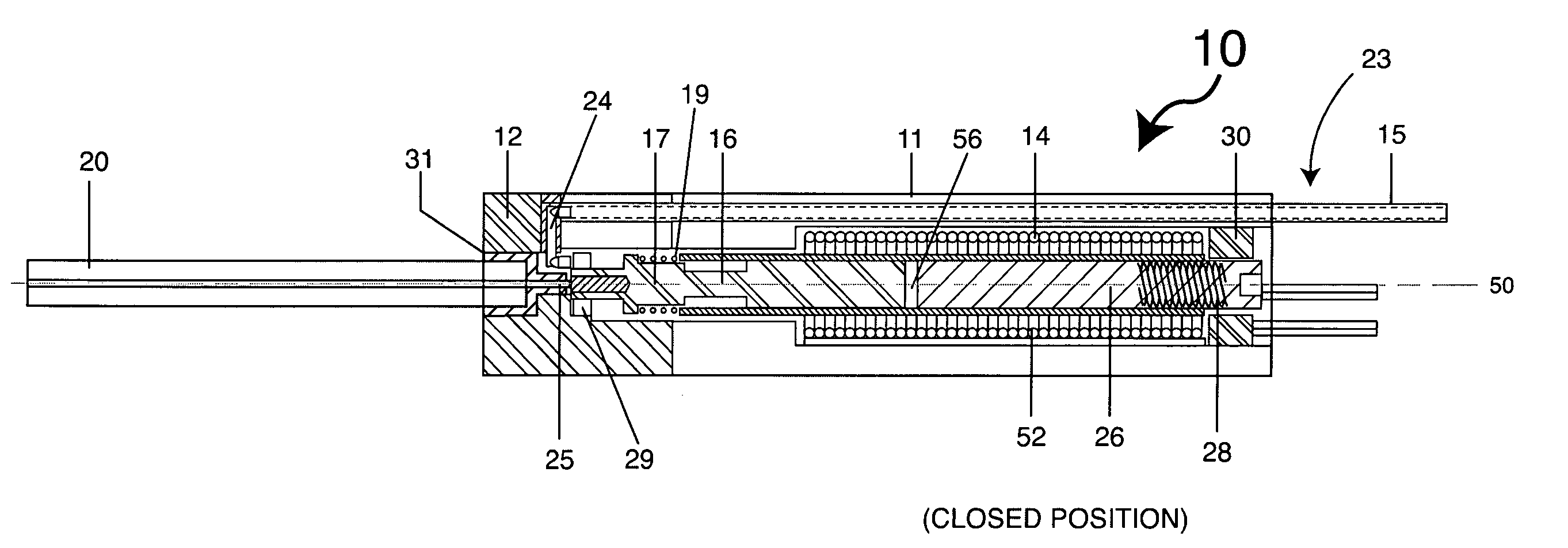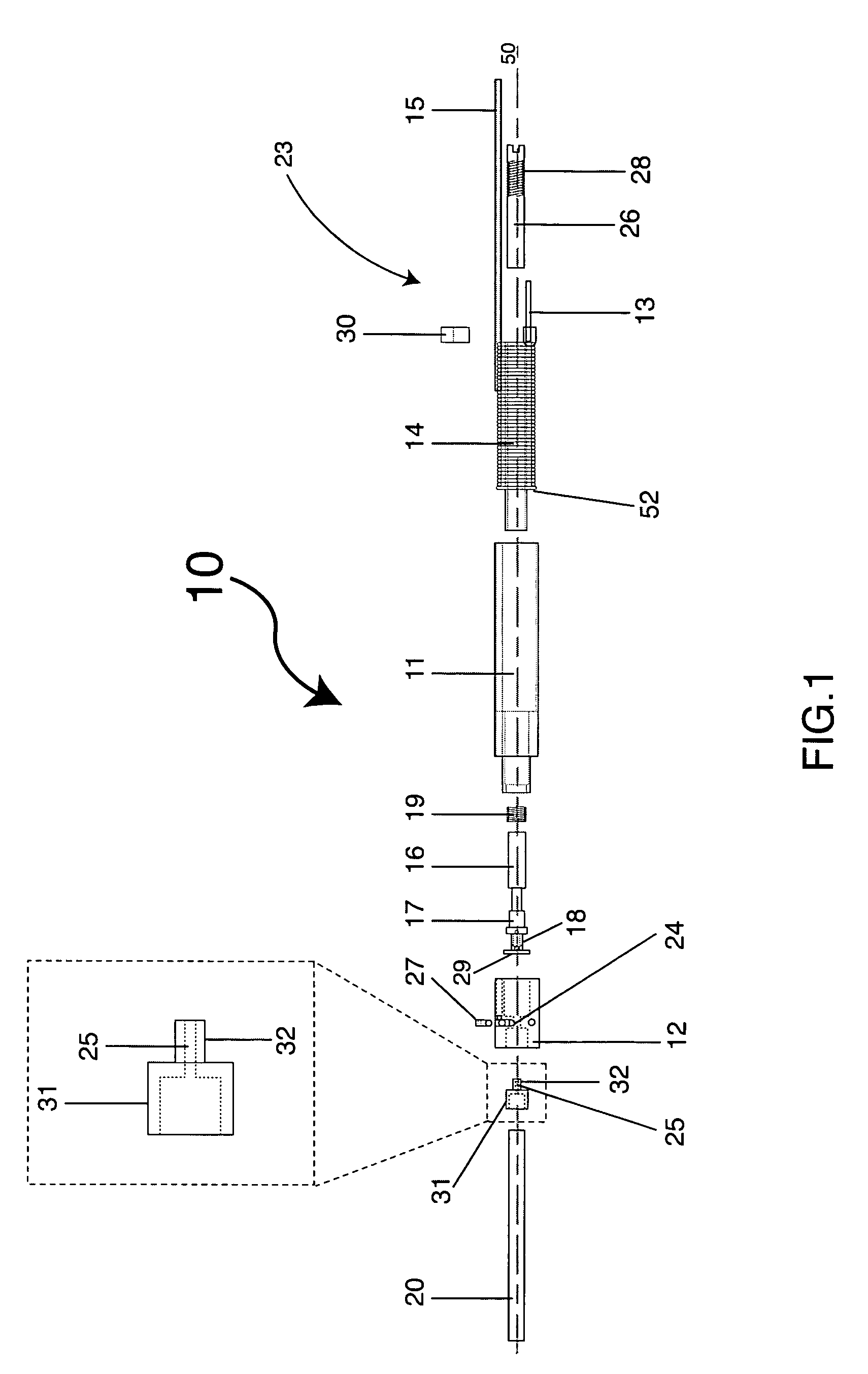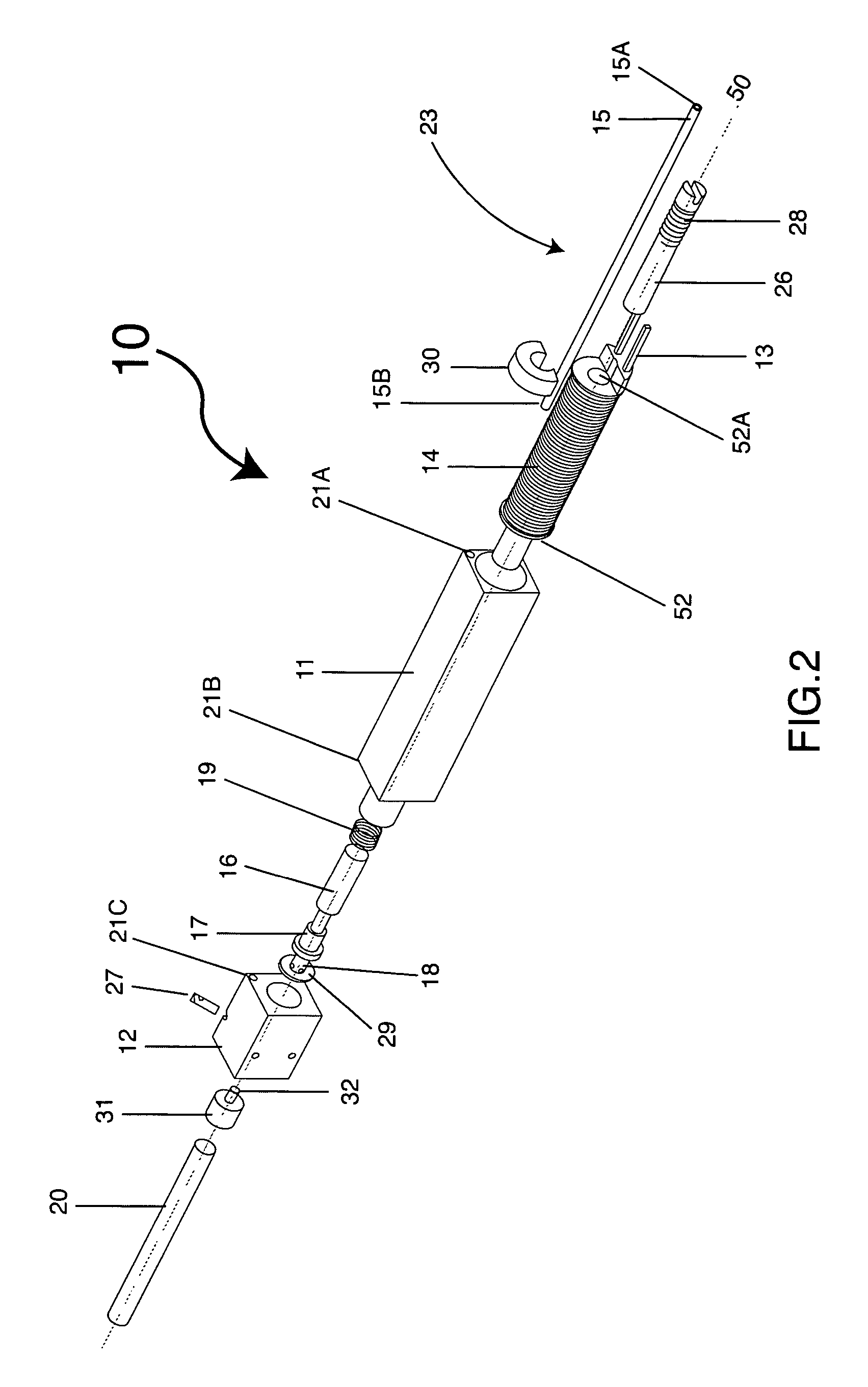Rear feed micro-fluidic two-way isolation valve
a micro-fluidic and two-way isolation technology, applied in the field of valves, can solve the problems of inefficiency of xyz machines coming from the bottom of the cuvette, takes approximately 2-3 seconds to press the end cap into the housing, etc., and achieves the effect of short movement of the plunger rod, reducing power consumption of the valve, and quick operation tim
- Summary
- Abstract
- Description
- Claims
- Application Information
AI Technical Summary
Benefits of technology
Problems solved by technology
Method used
Image
Examples
Embodiment Construction
[0036] Referring initially to FIG. 1, a first preferred embodiment of a solenoid-operated valve 10 according to the present invention is shown. The valve 10 is a two-way isolation valve in that the valve 10 has two positions: open and closed. In this example, the valve 10 is de-energized in the closed position. The valve 10 comprises external components including a coil housing 11 and an end cap 12. A top or rear end 23 of the solenoid valve 10 includes electrical leads 13 that provide power to energize a solenoid coil 14. The valve 10 includes an inlet 15 at the rear end 23 of the valve 10 and an outlet 20 on the bottom, in order to conveniently couple the valve 10 to a positioning mechanism, such as an XYZ machine (not shown). In a preferred embodiment, the valve 10 is an isolated valve that is fed through the top or rear end 23.
[0037] Unlike conventional valves, the housing 11 is square with four 0.250 inch sides, allowing many valves to be utilized in close proximity so as to p...
PUM
 Login to View More
Login to View More Abstract
Description
Claims
Application Information
 Login to View More
Login to View More - R&D
- Intellectual Property
- Life Sciences
- Materials
- Tech Scout
- Unparalleled Data Quality
- Higher Quality Content
- 60% Fewer Hallucinations
Browse by: Latest US Patents, China's latest patents, Technical Efficacy Thesaurus, Application Domain, Technology Topic, Popular Technical Reports.
© 2025 PatSnap. All rights reserved.Legal|Privacy policy|Modern Slavery Act Transparency Statement|Sitemap|About US| Contact US: help@patsnap.com



